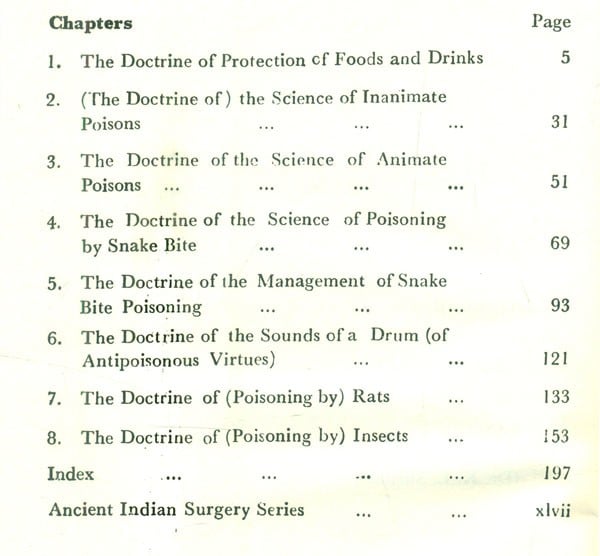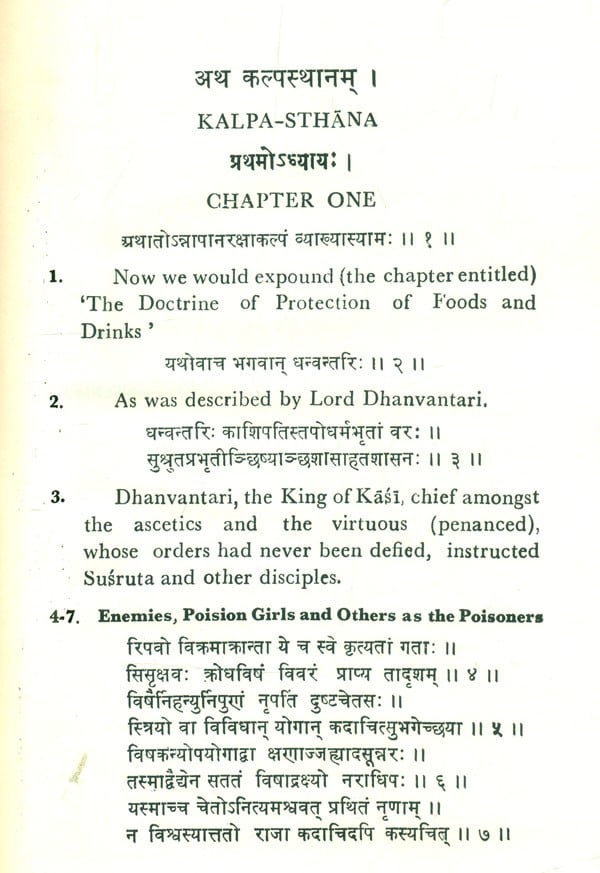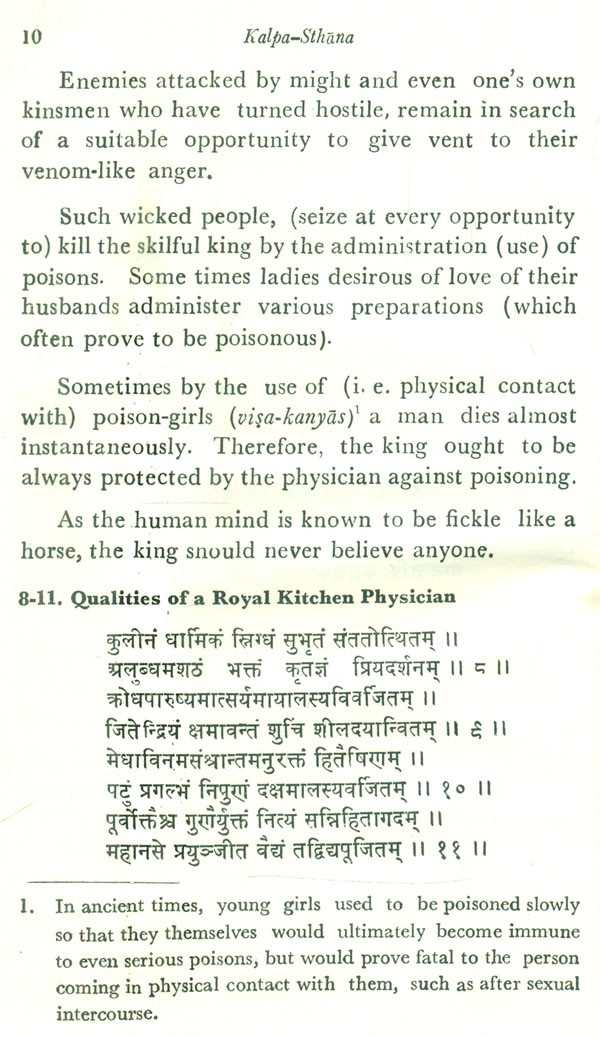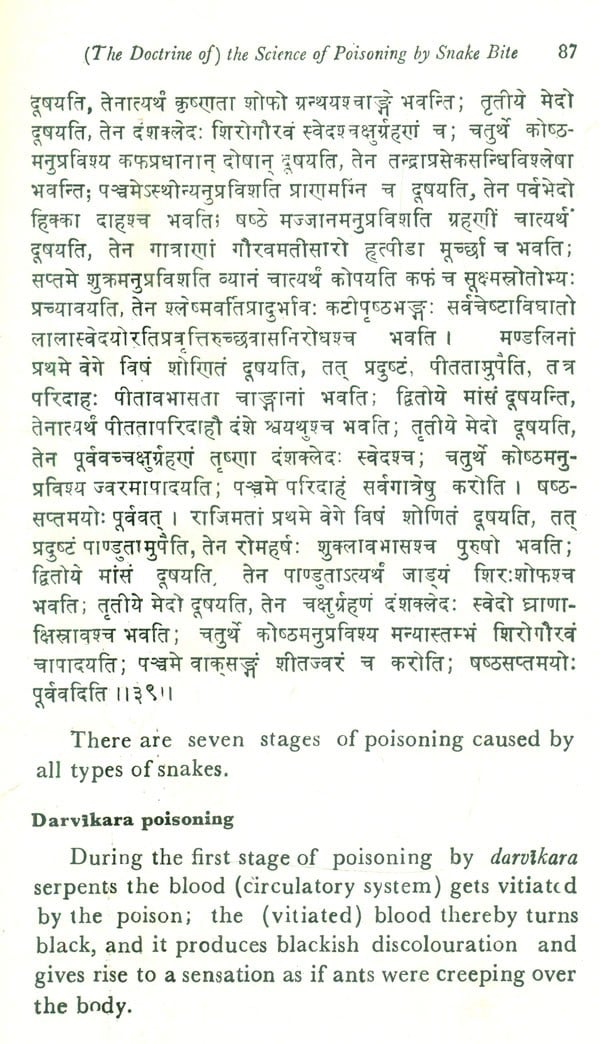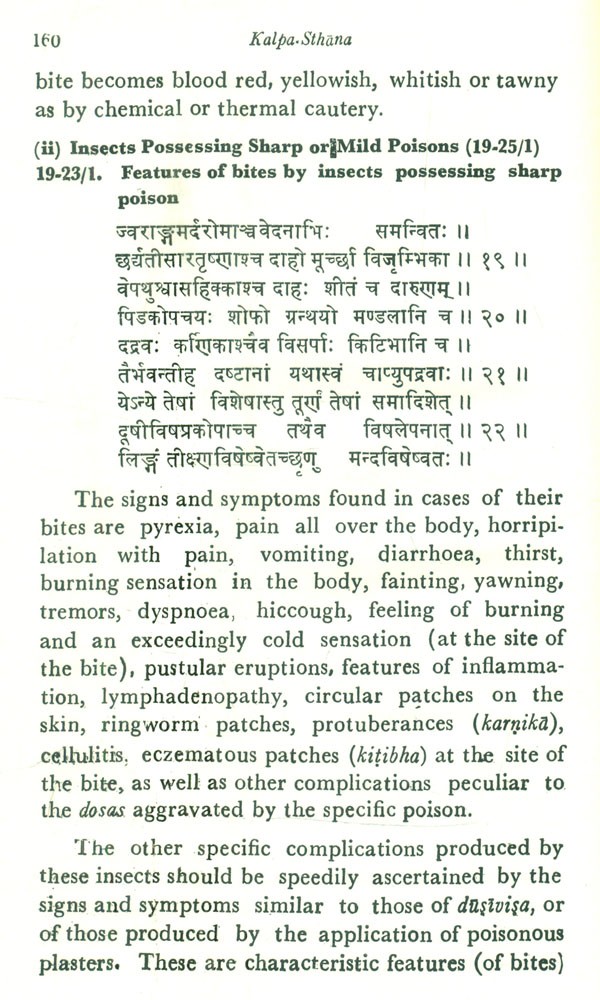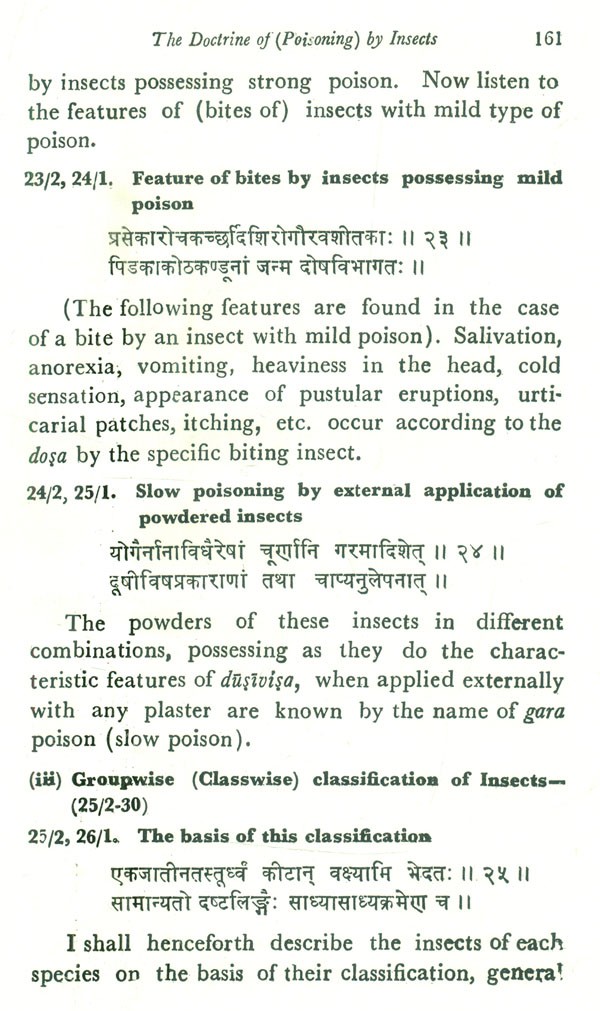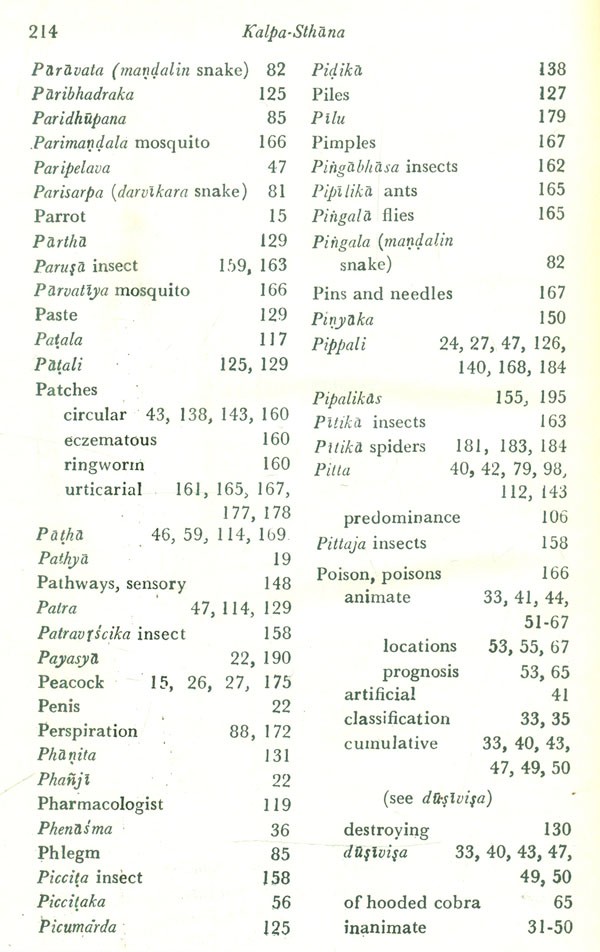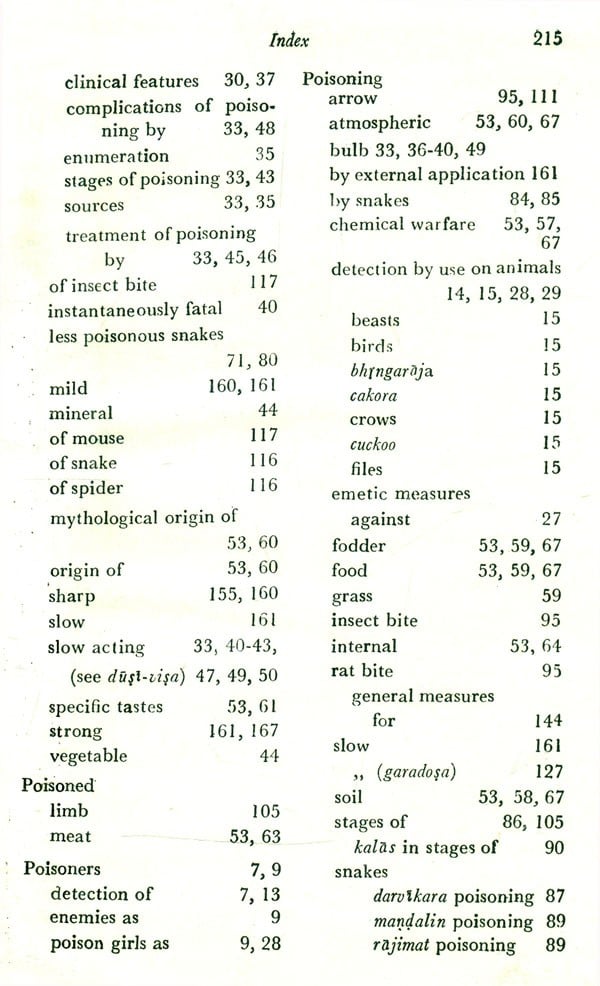
Toxicological Considerations in Ancient Indian Surgery- Based on Kalpasthana of Susruta Samhita: Part-7 (An Old and Rare Book)
Book Specification
| Item Code: | UBE012 |
| Author: | G.D. Singhal |
| Publisher: | Chaukhamba Sanskrit Pratishthan |
| Language: | SANSKRIT TEXT WITH ENGLISH TRANSLATION |
| Pages: | 272 |
| Cover: | HARDCOVER |
| Other Details | 9.00 X 6.00 inch |
| Weight | 450 gm |
Book Description
It is in fact a novel presentation, in which each important statement in the original Sanskrit is annotated and interpreted in English in a systematic order which greatly simplifies the task of those referring to specific passages. Each of the 186 chapters has a summary at the beginning and a list of research problems at the end, and each verse within the chapter has its own topic heading.
The team of Indian scholars responsible for this veritable encyclopedia of ancient Indian surgery has spent ten years on its preparation and is now seeing the volumes through the press. The first of these, which was devoted to Diagnostic Considerations, appeared in time to be presented to the 600 delegates from 47 countries who attended the XXIII Inter- national Congress on the History of Medicine in London in September 1972. The next, entitled Toxicological Considerations in Ancient Indian Surgery is now approaching publication and it is with great pleasure that I have accepted Dr. Singhal's invitation to write the Foreword for this volume. Its importance cannot be overestimated, for it makes available to western historians of medicine for the first time an authentic scientific version of an outstanding classic of which only echoes have so far appeared in their literature.
Recent developments in biochemistry, particularly in the field of synthetic medicines, has brought us to an era in which we are encountered with a flood of life saving chemo therapeutic agents on the one hand and life destroying chemical poisons of ever increasing intensity on the other Humanity is passing through a situation which is reminiscent of the graphic mythological story of churning the ocean which was really started for bringing forth the ambrosia but which incidentally brought forth virulent lethal poison hula-hula also Life saving and life destroying agents are at all times simulate onerously produced by the man himself.
**Contents and Sample Pages**

